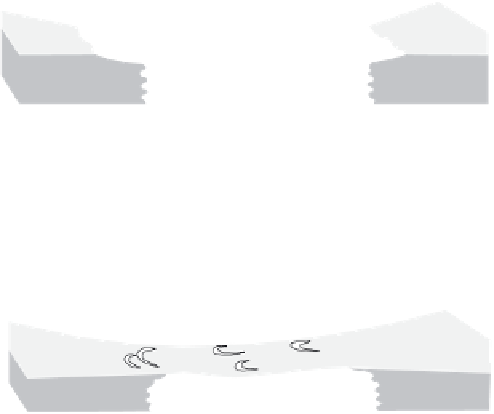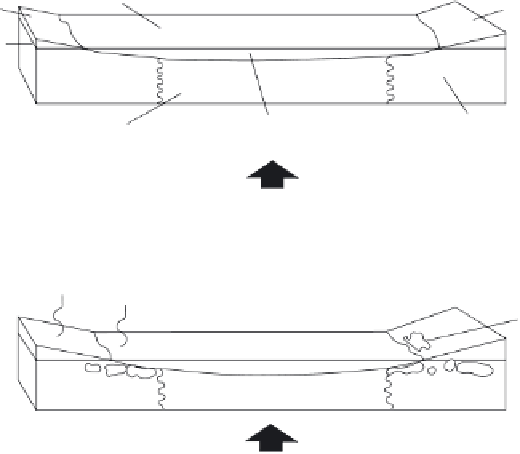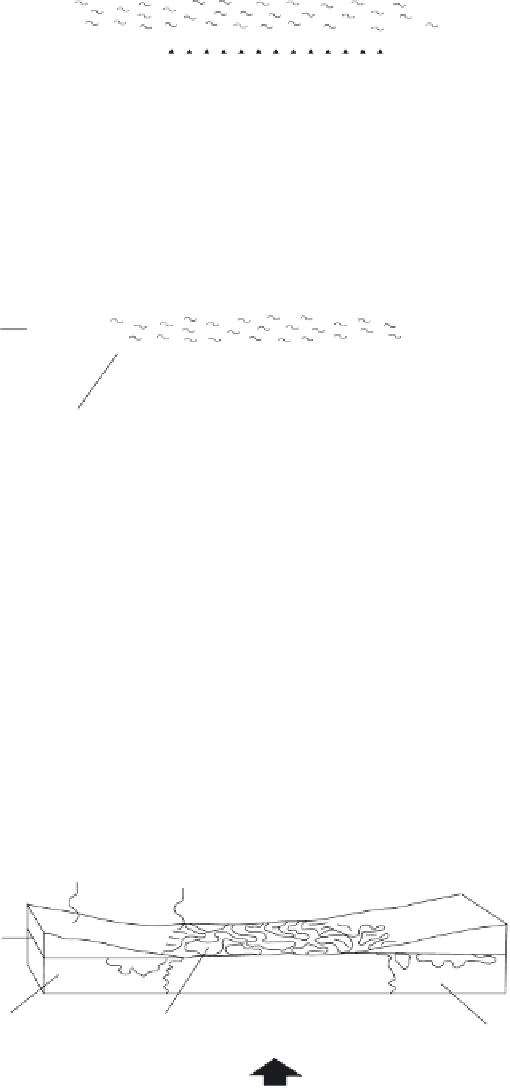Geoscience Reference
In-Depth Information
STAGE 1: FLOODING
Brackish Lake
Floodwaters
(Ca, SO
4
, Na, Cl, Mg, K)
Floodwaters
(Ca, SO
4
, Na, Cl, Mg, K)
Algal bloom
Watertable
Layered salts of salt pan
(gypsum and halite)
Dissolution of salt crust
(Na, Cl)
Gypsiferous muds of
the saline mudflat
Aquifer Flow
(Ca, SO
4
, Na, Cl, Mg, K)
STAGE 2: EVAPORATIVE CONCENTRATION
Evaporation
Saline Lake
Evaporative pumping
of brine producing
thin, efforescent
salt crust (halite) on
edge of water-body
Watertable
Vadose and phreatic growth
of salts (gypsum)
Aquifer Flow
(Ca, SO
4
, Na, Cl, Mg, K)
STAGE 3: BRINE POOL
Brine Pools and Salt Ramps
Wind moves pools over
the salt playa surface
Evaporative pumping
of brine producing
thin, efflorescent
salt crust (halite) on
edge of brine pools
Evaporation
Watertable
Concentrated brine pools
with halite, gypsum and
small carnallite crystals
Halite salt ramps orientated
in dominant wind direction
Aquifer Flow
(Ca, SO
4
, Na, Cl, Mg, K)
STAGE 4: DESICCATION
Dry Pan
Mineral assemblage:
Gypsum, Halite, Carnallite
Evaporation
Watertable
Concentrated
groundwater brine
Surface crust
broken into polygons
Authigenic growth of
gypsum and halite
within the mudflat
Aquifer Flow
(seasonal fluctuations in groundwater level
due to variations in evaporation)
Figure 15.10
The saline pan cycle for a typical playa; this example is taken from the Chott el Djerid, Tunisia, and charts the
cycle (and associated brine geochemical evolution) as it occurred after an extreme flood event in 1990 (after Lowenstein and





























